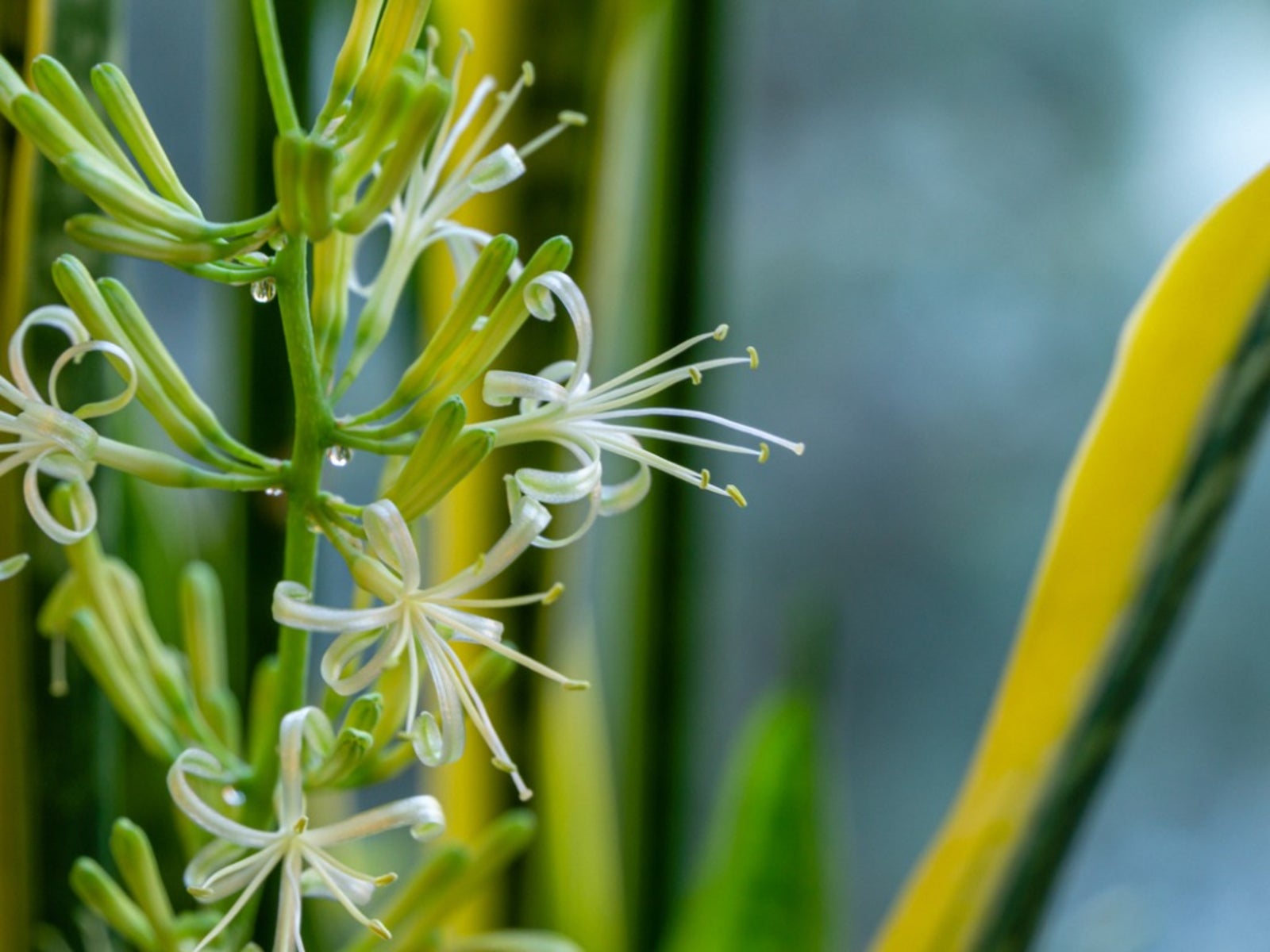Sansevieria Blooming: Flowers Of A Sansevierias (Mother-In-Law's Tongue)


You can own a mother-in-law's tongue (also known as snake plant) for decades and never know that the plant can produce flowers. Then one day, seemingly out of the blue, you find that your plant has produced a flower stalk. Is this possible? Do Sansevierias produce flowers? If they do, why now? Why not more than once a year? Keep reading to learn more.
Do Sansevierias (Mother-in-Law's Tongue) Have Flowers?
Yes, they do. Though mother-in-law's tongue flowers are extremely rare, these hardy houseplants can have flowers.
What Do Sansevierias (Mother-in-Law's Tongue) Flowers Look Like?
Mother-in-law's tongue flowers grow on a very long flower stalk. The stalk can reach a length of up to 3 feet (1 m.) and will be covered in dozens of flower buds. The flowers themselves will be white or cream colored. When fully open, they will look a lot like lilies. The flowers also have a very strong and pleasing scent. The scent can occasionally attract pests due to the strength of the smell.
Why Do Sansevierias (Mother-in-Law's Tongue) Plants Flower?
While it seems like common sense to be as nice as possible to your plants, Sansevieria plants are like a lot of houseplants in that they thrive on a little neglect. A mother-in-law's tongue plant will produce a flower stalk when it is mildly and continually stressed. This normally happens when the plant becomes root bound. The flowers will not hurt your plant, so enjoy the show. It may be several decades again before you see one again.
Sign up for the Gardening Know How newsletter today and receive a free copy of our e-book "How to Grow Delicious Tomatoes".

Heather Rhoades founded Gardening Know How in 2007. She holds degrees from Cleveland State University and Northern Kentucky University. She is an avid gardener with a passion for community, and is a recipient of the Master Gardeners of Ohio Lifetime Achievement Award.